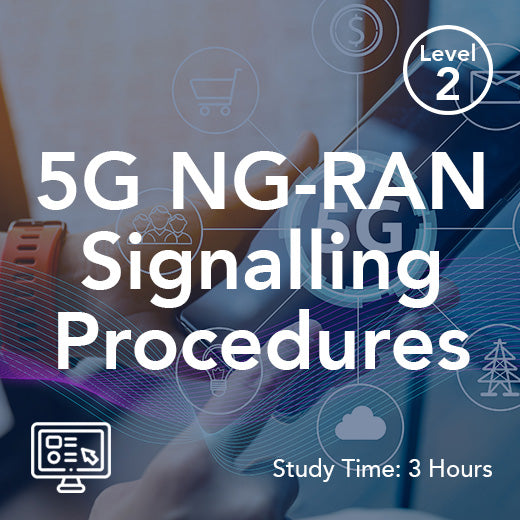Everything You Need to Know About National Roaming: A Complete Guide
- , by Paul Waite
- 18 min reading time
In an increasingly interconnected world, staying connected while travelling across regions is more crucial than ever, and this is where national roaming comes into play. Roaming refers to the ability of mobile users to access network services—including voice, data, and international connectivity—outside their home network coverage, enabling seamless communication for travelers. National roaming allows mobile users to access network services outside their home provider’s coverage area, without the need to switch carriers. It is particularly beneficial for those who frequently travel within vast countries where coverage may vary significantly between regions. This guide will delve into the complexities of national roaming, examining its benefits, potential drawbacks, and offering practical advice on how to make the most of it. Whether you are a frequent traveller or someone who occasionally ventures beyond your local area, understanding national roaming can ensure you remain connected without interruption.
Understanding National Roaming
What is National Roaming?
National roaming is a service that allows cell phone users to access network services outside their home network—your primary provider’s coverage area—without changing carriers. When you travel to a region where your home network has limited or no service, your cell phone can automatically switch to a network that has a stronger presence in that area. National roaming allows users to access network services across different regions within the same country. This seamless transition ensures you remain connected for calls, texts, data, and can also receive calls while roaming. It’s an invaluable feature in large countries where network coverage can vary dramatically between urban and rural areas. By partnering with other network providers, your carrier can offer more comprehensive coverage. However, it is crucial to be aware that while national roaming is convenient, it might incur additional costs depending on your mobile plan. Understanding how your plan handles national roaming can help you avoid unexpected charges and optimise your mobile experience while traveling within your country.
How National Roaming Works and Roaming Agreements
National roaming operates by enabling your mobile device to connect to another provider’s network when your primary provider’s signal is weak or unavailable. The alternative network your device connects to is called the visited network. This process begins when your phone detects a loss of coverage from your usual network. It then searches for alternative networks in the vicinity. Once detected, it automatically connects to a partner network, allowing you to continue making calls, sending texts, and using data services. The SIM card plays a crucial role in enabling access to different networks during roaming. This seamless switch happens in the background, often without any noticeable interruption to your service.
Your mobile provider establishes agreements with other network operators to facilitate this process, and this service ensures you have access to the best available signal. However, the availability of roaming services and any associated costs are determined by these agreements and your specific mobile plan. It’s wise to check your plan’s details to understand how national roaming is handled, especially if you frequently travel to areas with varying network coverage.
Benefits of National Roaming
National roaming offers several advantages, particularly for those who travel frequently within a country. Firstly, it provides enhanced coverage, ensuring that you remain connected even in areas where your primary network provider has limited service. This is especially beneficial in rural or remote regions where network infrastructure may be sparse. National roaming improves the customer experience by providing uninterrupted service, even in locations with limited coverage. Secondly, national roaming can improve call quality and data speeds by connecting you to a stronger network when your usual signal is weak. This helps maintain high service quality, ensuring seamless connectivity and reducing downtime. This ensures a more reliable mobile experience, reducing dropped calls and buffering.
Additionally, the convenience of national roaming means you don’t need to switch carriers or purchase additional SIM cards when travelling domestically. It simplifies mobile connectivity by providing a consistent service across different regions, making it easier to stay in touch with family, friends, and colleagues. By leveraging partnerships with others' networks, your provider can offer broader coverage, enhancing your overall mobile experience while keeping you seamlessly connected.
The Role of Mobile Network Operators
Mobile network operators are at the heart of national roaming, ensuring that mobile users can access network services even when they move outside their home network’s coverage area. This is especially important in regions with limited infrastructure, such as rural or remote locations, where a single network may not provide comprehensive coverage. By collaborating with other network operators, these companies can extend their coverage area, allowing subscribers to enjoy a more reliable mobile experience wherever they go.
For mobile users, this means fewer dropped calls, better data speeds, and the ability to stay connected in more places. The partnerships between mobile network operators are essential for delivering network services that meet the needs of today’s mobile users, who expect seamless connectivity and reliable service at all times. As a result, national roaming plays a vital role in enhancing the overall mobile experience, ensuring that users can access network services and maintain connectivity, regardless of their location within the country.
Who Are the Main Operators?
The main mobile network operators are typically the largest telecommunications companies in each country, responsible for providing mobile services to millions of subscribers. In the UK, for instance, the primary operators are EE, O2, Vodafone, and Three. These companies have established extensive roaming agreements with other networks, both within their own country and internationally, to ensure that their customers can enjoy seamless connectivity wherever they travel.
Understanding national roaming is particularly important for mobile users who frequently move between different regions. Thanks to these roaming agreements, users can stay connected to mobile services even when they are outside their home network’s coverage area. This reduces the risk of unexpected charges and ensures that users can rely on their mobile devices for calls, texts, and data, no matter which part of the country they are in. By working together, these network operators create a robust network that benefits all mobile users, making it easier to stay connected and avoid service interruptions.
How Operators Enable National Roaming
Mobile network operators enable national roaming through carefully negotiated roaming agreements with other network operators. These agreements outline the terms under which subscribers can access network services outside their home network’s coverage area, including details about coverage area, data speeds, and any applicable roaming fees. By establishing these partnerships, operators ensure that mobile users can enjoy seamless connectivity and reliable mobile communications, even in areas where their own network infrastructure may be limited.
To support national roaming, network operators invest heavily in network infrastructure, such as building and maintaining cell towers, deploying fiber optic cables, and upgrading technology to support faster data speeds and more reliable connections. This infrastructure is crucial for delivering high-quality network services, including voice calls, emergency services, and internet services, to users across the country.
For mobile users, these efforts translate into a more reliable mobile experience, with fewer dropped calls and better access to data services. National roaming also enhances customer satisfaction, as users can trust that their mobile device will work when they need it most—whether for everyday communications or in emergency situations. By enabling national roaming, mobile network operators not only expand their coverage area but also strengthen their reputation for providing dependable, high-quality mobile services.
The Costs of National Roaming
Typical Charges Involved
While national roaming offers excellent connectivity benefits, it can come with additional costs. An additional cost may be incurred when you use roaming services for incoming calls, SMS, or data outside your home network or region, unless your plan specifically includes these services. These charges vary depending on your mobile provider and the specific terms of your plan. Often, national roaming fees apply when you connect to a partner network outside your provider’s standard coverage area. These fees can include higher costs for calls, texts, and data usage compared to your regular plan. Some providers might charge a per-minute rate for calls or a per-MB rate for data consumed while roaming.
It’s worth noting that some mobile plans offer inclusive national roaming, meaning these extra charges are absorbed within your monthly plan fee. However, others may not, leading to unexpected costs on your bill. To avoid any surprises, it’s advisable to review your plan’s terms and conditions regarding national roaming. Understanding the cost implications of using national roaming will help you manage your mobile expenses and make informed decisions about your usage when travelling across different regions.
How to Avoid Hidden Fees
Avoiding hidden fees associated with national roaming requires a proactive approach. Start by thoroughly reviewing your mobile plan and understanding its terms concerning national roaming. Check if your plan includes national roaming services or if additional charges apply. Contact your provider for clarification if needed.
Another practical step is to monitor your usage while roaming. Many mobile providers offer apps or online portals where you can track your data, call, and text usage in real-time. Setting up usage alerts can help you stay within your plan's limits and avoid extra costs.
Turning off data roaming on your phone and relying on Wi-Fi whenever possible can also help control expenses. Finally, consider temporary add-ons or travel bundles offered by your provider. These can provide a cost-effective solution for frequent travellers, offering a set amount of data, calls, and texts at a discounted rate, reducing the risk of incurring high roaming fees.
Comparing Providers' Rates
When it comes to national roaming, rates can vary significantly between mobile providers. This makes it vital to compare the rates offered by different companies before deciding on a plan. Start by researching the roaming fees each provider charges for calls, texts, and data usage outside their primary network. Some providers might offer plans with inclusive roaming services, while others may charge extra for these features.
Consider the coverage area and partnerships each provider has in place. The infrastructure and agreements between different mobile networks play a crucial role in determining roaming rates, as providers with broader mobile network partnerships often offer better rates and more reliable service in areas where your primary network lacks coverage. Additionally, look for any special roaming packages or add-ons that can help reduce costs.
Reading customer reviews and seeking recommendations can also provide valuable insights into the real-world experience of using national roaming with different providers. By thoroughly comparing these factors, you can find the most cost-effective and reliable option that meets your connectivity needs while managing costs efficiently.
Choosing the Right Plan
Evaluating Your Needs
Selecting the right mobile plan for national roaming begins with assessing your specific needs. Start by considering how frequently you travel to areas where your primary network may not be available. Frequent travellers might benefit from plans that offer inclusive national roaming or discounted roaming rates. If your travel is less frequent, a pay-as-you-go option might be more suitable to avoid unnecessary costs.
Examine your typical usage patterns, such as the amount of data, calls, and texts you use while travelling. This information can help you choose a plan that aligns with your usage habits, ensuring you have enough coverage without overpaying for services you don't need.
Additionally, think about your budget and how much you are willing to spend on connectivity while on the move. By evaluating these factors, you can select a plan that offers the right balance of coverage, cost, and convenience, keeping you connected without exceeding your budget.
Popular National Roaming Plans
When selecting a mobile plan with national roaming, it's helpful to explore popular options available from major providers. Many companies offer plans specifically designed to accommodate roaming needs. These often include a set amount of data, call minutes, and texts that can be used while roaming without additional charges.
For example, some providers offer "all-in-one" bundles, which include national roaming as part of the standard package, eliminating the need for separate roaming fees. These plans are ideal for frequent travellers who require consistent connectivity across different regions.
Alternatively, pay-as-you-go options allow users to pay only for the services they use while roaming. This can be cost-effective for those who travel less frequently. Some providers also offer short-term add-ons or roaming passes that provide discounted rates for a limited period, catering to occasional travellers.
By exploring these popular plans, you can find a solution that aligns with your travel habits and budget, ensuring seamless connectivity wherever you go.
Tips for Negotiating Better Deals
Negotiating a better deal on your national roaming plan can lead to significant savings. Start by researching different providers and their offers to understand what's available in the market. This knowledge will give you leverage when discussing terms with your current provider.
Before contacting your provider, clearly define your needs and budget. Highlight any issues you have faced with your current plan, such as poor coverage or unexpected fees, and express your desire for a plan that better suits your requirements.
When speaking with customer service, remain polite but firm. Mention any competitive offers you've found and ask if they can match or beat these deals. Providers often have retention departments with the authority to offer discounts or additional benefits to keep you as a customer.
Don't hesitate to ask for a custom package that better fits your usage patterns. Demonstrating loyalty, such as being a long-term customer, can also be a persuasive factor in securing a more favourable deal.
Managing National Roaming Usage
Monitoring Your Usage
Keeping track of your national roaming usage is crucial to avoid unexpected charges and to manage your mobile expenses effectively. Many mobile providers offer tools and apps that allow you to monitor your usage in real-time. These platforms can provide detailed information on how much data, call minutes, and texts you have consumed while roaming.
Set up usage alerts to notify you when you're approaching your plan's limits. This proactive strategy helps prevent overage charges and encourages you to adjust your usage if necessary. Additionally, regularly reviewing your billing statements can reveal patterns in your roaming activity, helping you make informed decisions about your plan.
Utilising these monitoring tools can also highlight when it might be beneficial to switch to a plan with more inclusive roaming features if your usage consistently exceeds your current plan's allowances. By staying informed about your usage, you can optimise your mobile plan to better suit your travel habits and avoid unnecessary costs.
Tips for Reducing Roaming Costs
Reducing national roaming costs involves strategic planning and mindful usage. Begin by limiting your data usage while roaming. Turn off automatic updates and app background data to avoid unnecessary data consumption. Instead, connect to Wi-Fi networks whenever possible to perform data-heavy tasks such as streaming or downloading.
Consider disabling data roaming on your phone and manually enabling it only when necessary. This simple step can prevent accidental data use and help you stay within your plan's limits.
Another effective tip is to use messaging apps that work over Wi-Fi for calls and texts. This can significantly cut down on roaming charges for traditional voice calls and SMS.
Stay informed about any roaming promotions or temporary add-ons offered by your provider. These can provide discounted rates during your travel period, offering a cost-effective solution to managing roaming expenses. By implementing these tips, you can maintain connectivity while keeping your roaming costs under control.
Understanding Fair Use Policies
Fair use policies are guidelines set by mobile providers to prevent excessive usage of roaming services, ensuring that all customers have access to fair and reasonable service. These policies typically outline the limits on data, calls, and texts that can be used while roaming within a billing cycle. Exceeding these limits may result in additional charges or reduced service speeds.
Regulatory bodies oversee and enforce these fair use policies to ensure fairness and promote competition within the mobile industry.
To manage your roaming effectively, it’s essential to familiarise yourself with your provider’s fair use policy. Understand the specific thresholds for data, call minutes, and text messages, and keep track of your usage to stay within these limits. Providers often use these policies to prevent network congestion and ensure equitable access for all users.
If you anticipate high usage, consider plans with more generous allowances or add-ons designed for heavy roamers. By staying informed about fair use policies, you can avoid unexpected charges and ensure a seamless mobile experience while travelling across different regions.
Future of National Roaming
Advances in Roaming Technology
The future of national roaming is being shaped by rapid advancements in technology, promising enhanced connectivity and more seamless experiences for users. One notable development is the ongoing rollout of 5G networks. With higher speeds and lower latency, 5G technology facilitates faster data transfer, improved call quality, and more reliable connections even in areas with high network demand. Advances in frequency bands, such as support for multiple bands like 900/1800 MHz or 850/1900 MHz, enable devices to connect seamlessly across various networks and regions, ensuring compatibility and uninterrupted service during international roaming.
Moreover, advancements in network infrastructure, such as the integration of artificial intelligence and machine learning, allow for more efficient management of network resources. This can lead to optimised network selection and reduced congestion during peak times, enhancing the overall user experience.
Additionally, the Internet of Things (IoT) is expanding the scope of national roaming, as more devices become interconnected. As technology evolves, providers are also exploring new ways to offer more flexible and cost-effective roaming plans. These technological strides indicate a future where national roaming is more efficient, reliable, and accessible, meeting the growing demands of an increasingly mobile society.
The Impact of Brexit on Roaming
Brexit has introduced uncertainty and changes in the landscape of roaming charges between the UK and EU countries. Prior to Brexit, UK mobile users benefited from the EU’s “Roam Like at Home” regulation, which eliminated additional roaming charges across member states. However, post-Brexit, UK providers are no longer bound by this regulation, allowing them to set their own roaming charges for usage within the EU. UK networks are now adapting to the new regulatory environment by reassessing their roaming agreements and inter-network connectivity to ensure continued service for consumers.
This shift means that some UK providers have reinstated roaming fees, while others have chosen to maintain the previous arrangements without extra charges. It’s crucial for consumers to stay informed about their provider’s policies, as these can vary and may change over time.
Brexit has also prompted discussions on bilateral agreements to manage roaming fees, but as of now, no standardised framework exists. Understanding these changes and monitoring provider announcements can help UK travellers avoid unexpected costs when using mobile services in the EU post-Brexit.
Predictions for Roaming Costs
The future of roaming costs is likely to be influenced by several factors, including advancements in technology, regulatory changes, and consumer demand. As 5G technology becomes more widespread, some predict that the increased efficiency and capacity of networks could lead to more competitive pricing and potentially lower roaming costs. However, this is contingent on providers passing these savings on to consumers. Looking ahead, international roaming costs may follow similar downward trends as national roaming, especially as global connectivity becomes a priority for both consumers and providers.
Regulatory developments will also play a crucial role. Policymakers may introduce new regulations to protect consumers from excessive roaming fees, especially in regions like the EU where a roaming agreement previously provided cost benefits. Future roaming agreements between providers and countries could further impact costs by standardizing charges and improving interoperability.
Consumer demand for transparent and fair pricing could drive providers to offer more inclusive plans with competitive roaming options. The rise of globalisation and the need for constant connectivity might also pressure providers to innovate roaming solutions that cater to frequent travellers. Improvements in data service and mobile data management could also help reduce roaming costs by optimizing how data is delivered and billed when users are abroad. Overall, while the specifics are uncertain, the trend points towards more consumer-friendly roaming options in the future. The role of the network operator will be central in shaping these future roaming options and pricing structures.

































